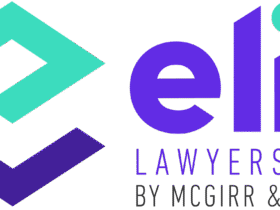The internet is the ultimate source of information. Whether people want to learn something, do something, or buy something, they turn to Google. In fact, even offline activities like conversations, watching an ad, or opening a magazine drive people to search engines. And what they find online influences their perception of your brand. Online reputation management controls your digital narrative which which influences real-world perceptions and actions.
But there are some limitations.
The vast majority of searchers never explore beyond the first page of Google. Consequently, brands and high-profile individuals only get as few as ten search results to tell their story. And that’s a massive challenge when there are hundreds of thousands of articles about you on the internet, many of which could be biased or misleading.
Online reputation management ensures that your digital reputation is accurate and positive. But, what is it and how does it work?
What is reputation management?
Contrary to popular belief, ORM isn’t just review management and press release distribution.
Online reputation management (ORM) is a discipline that uses search engine optimization techniques to influence the search results of a company or individual in order to shape brand perception.
Jonas Sickler, ReputationManagement.com
Most business leaders believe a positive reputation is important. However, they often fail to recognize that Google search is a key driver of their reputation. Furthermore, executives rarely understand how to effectively influence online sentiment, or measure its financial impact on their company. As a result, business owners rarely take action to manage their online reputation, leaving it to chance.
To make matters worse, there’s also a lot of confusion about whether public relations firms or SEO companies are better equipped to tackle ORM. So, let’s dive into how ORM is different from search engine optimization (SEO) and public relations (PR).
Online reputation management vs SEO
Most businesses are familiar with SEO as a means of driving organic traffic by influencing keyword rankings. In fact, according to a Forrester Consulting study commissioned by Terakeet, 81 percent of executives moderately-to-strongly agree that SEO will become an increasingly more important priority over the next 12 months.
However, the vast majority of brands fail to capitalize on the power of SEO for reputation management. So, what’s the difference?
Here’s the simplest explanation I can provide:
SEO is used to rank multiple pages on one website for many different keywords. While online reputation management is used to rank many different websites for a small set of branded keywords. Here’s another way to look at it:
The goal of SEO is to rank a single website number one for as many queries as possible. The goal of ORM is to fill the first page of Google with preferred content for brand-focused keywords. Think of it like this: reputation management is one inch wide and one mile deep, SEO is one mile wide and one inch deep.
Ultimately, ORM uses SEO principles and best practices to build a more accurate and diverse search landscape.
Reputation management vs public relations
The difference between online reputation management services and public relations is a little more nuanced. On the surface, it may seem like ORM is just public relations for online personas because they have similar goals, namely brand management. However, these two disciplines use different tactics to achieve different results.
Public relations companies generally create trending, buzzworthy news cycles to redirect the conversation around negative topics. The goal is to shift public perception by flooding social media and news outlets with a new viral narrative. Whereas online reputation management aims to tell a more accurate and holistic story about a brand or individual by positioning controllable assets on the first page of Google.
PR is good for shifting real-world sentiment. But, it falls short when it comes to influencing branded search results which drive reputation and allow companies to control their own messaging.
Why does negative content rank in Google?
Unfortunately, you may have already experienced just how sticky a negative news story about your brand can be. It’s not because Google has a personal vendetta against a single person or entity. It’s because Google’s algorithm is built to provide searchers with the best, most relevant set of search results for a user’s query. And if a brand or executive is managing a crisis, that content would be highly relevant.
That all said, there are a few main reasons negative content so frequently hits the first page.
Topic density
Topic density describes the percentage of content in Google’s index about a specific entity as it relates to other entities, topics, or events.
For instance, if you search Elon Musk in Google, you’ll find results about SpaceX and Tesla. It’s not because Elon Musk wrote in his bio that he created those companies. It’s because there’s so much content online that connects him to SpaceX and Tesla.
Unfortunately, topic density can also negatively affect a brand’s reputation. As an example, if a business was recently responsible for a toxic chemical spill, Google will prioritize articles about that event when people search that company’s name. What’s more, if the CEO made a decision that caused the accident, that person’s search results would also be affected.
Popularity
Backlinks are the new word-of-mouth referral, for better or for worse. If trustworthy websites link to a negative story about your business, that sends a strong signal to Google that it’s relevant and important. As a result, it may pop onto the first page of your search results where more people will see it. In turn, it will earn more clicks because people tend to click on negative headlines more often. Google will interpret these click signals as popularity and relevance, potentially pushing the result even higher.
Time sensitivity
When it comes to news stories, Google loves timeliness. Which means any trending topic — positive or negative — will be given more weight in the SERPs. It’s possible that these stories could fade away when they become stale. However, viral content on trusted sites often earns a lot of links, which gives it more sticking power.
How does online reputation management work?
There are so many misconceptions floating around about online reputation management. For example, it’s not negative SEO, and firms don’t magically delete negative results. That would be hacking, and it’s highly illegal.
ORM is actually about creating a more balanced and accurate search landscape. It’s about telling your story on the first page of Google by controlling more of the content that appears there. Let’s break down a few more misconceptions about how digital reputation management works.
Pushing down search results
When online reputation managers talk about fixing search results, they often use terms like bury or push down. That’s because suppression plays a key role in making sure the first page of Google accurately reflects your personal and professional brand. However, in order to bury a negative search result that ranks in the first position, you need to lift up 9 other URLs to push it off the page. That’s much more difficult than ranking a single website number one.
Moreover, before you can push down any negative results, you’ll need to create positive content about your brand to promote. Content marketing for ORM means publishing and optimizing lots of original, thoughtful, keyword-driven articles, videos, images and blog posts. It also means promoting that content through link building to ensure customers find it.
SERP diversity
Google tends to favor diversity in its search engine results because its goal is to provide the best set of results for each query. Since it’s not always clear what searchers want, Google serves a range of content for branded searches. So, what does an established, positive online presence look like for brands and CEOs? It usually contains a mix of the following:
- Websites
- Blogs
- Positive reviews
- Thought leadership
- Videos
- Images
- News articles
- social profiles
Ultimately, it’s easier to suppress unfavorable results in Google when your search landscape is packed with well-diversified, positive content.
Accuracy, balance, and integrity
High-risk internet reputation management companies typically use smokescreen tactics to mask a person’s identity because it’s a cheap and easy tactic. They do this by creating dozens of digital doppelgangers to clog up the top ranking spots in the SERPs with fake personas that share your name. While that tactic may work for the average Joe, it won’t remove news articles from Google about a global brand or its chief executive.
The only way to truly build a long-term, positive reputation online is to establish a truthful, accurate search presence that portrays your legacy, accomplishments and preferred brand messaging. Any other type of tactic is bound to fail and will ultimately create a bigger disaster to clean up down the road.
A negative online reputation has real-world consequences
It can be easy to discount what happens online as unimportant and disconnected from your real-world business. But that simply isn’t true anymore. A negative online reputation impacts your personal brand image as well as just about every level of your business.
Search results are your digital resume
Think of Google like your digital resume. You’d never submit a resume for a job if the top bullet point read “Fired for lack of performance,” right? Unfortunately, unlike the printable version of your resume, you can’t just remove unwanted search results. Everything you ever said, wrote, or posted online, including what others wrote about you, is discoverable.
What do people find when they Google your name, or your company? If the answer is unfair viral news stories about your personal life, or negative reviews about your products and services, you need to update your virtual resume.
Your online reputation is permanent
Because Google almost never removes negative search results from its index, your online reputation is more or less permanent. Negative stories aren’t paper documents that you can shred or burn. They’re part of the digital archive forever.
Even social media comments that you quickly delete can be immortalized with a screen shot, posted in articles, and syndicated thousands of times.
What’s more, seemingly minor, unfavorable stories can stay stuck on the first page and leave a sour impression with the people that matter in business. With so many potential customers, shareholders, and prospective employees relying on Google, it’s only a matter of time before someone in your professional sphere stumbles on a negative page one result.
CEO reputation risk
Reputation risk has different meanings and consequences for executives and the corporations they lead.
As a CEO, your online reputation extends into both your personal and professional lives. Negative search results skew your accomplishments and shine a spotlight on a single event that doesn’t define who you are or what you’ve done. They overpower your philanthropic efforts, embarrass your family and friends.
Negative articles might also cause clients and partners to question their trust in your leadership, which could impact the trajectory of your professional career, and even impact your company’s financial health. In fact, one CEO’s bad reputation cost his company more than $96 million within a few short hours.
Corporate reputation risk
Corporations are held to higher standards than ever before, too. Consumers now expect brands to invest in environmentalism and ethical treatment of workers. In fact, those issues often influence consumers’ purchasing decisions. So, if potential customers discover an unfavorable headline about workers’ rights in your search results, it could overshadow years worth of corporate social responsibility efforts.
Furthermore, sensitivity is at an all time high for racial, gender and religious intolerance. That means inappropriate social media comments or tone deaf advertising could spark public outrage and cause long-term damage to your corporate reputation.
A negative brand reputation might stop customers from setting foot inside your business, as well as damaging strategic partnerships, investments, and growth opportunities. Read more about how corporate reputation management improves brand sentiment.
5 online reputation management best practices
1. Google yourself or your brand name
The only way to grasp the full scope of your reputation issue is to Google yourself. Don’t just click on the first two results and call it a day. Take a close look at as many of the search results as you can. For instance, we often analyse hundreds, if not thousands of results for our customers. Track any trends or patterns you see. Are all of the unwanted results about one negative event? Is it poor customer reviews? Or negative feedback on Glassdoor?
You can’t devise a solution for your problem until you know how big it is. If you find negative results that could tarnish your brand and affect your bottom line, you need to act quickly to resolve the issue.
2. Inventory your digital assets and vulnerabilities
It’s easy to focus solely on negative results when you map your search landscape. But, to accurately diagnose the overall health of your online reputation, it’s important to look at both your strengths and your weaknesses. Who are your allies? Do you have any detractors? Where are your biggest content gaps? How many controllable assets do you have?
Owning a single web property is a good starting point, but having multiple domains expands your digital footprint with content you control. This prevents others from buying domain names that are similar to yours in order to stage reputation attacks against you. Ultimately, owning multiple web assets makes it much harder for third parties to hijack your narrative.
To get started, execute a reputational risk assessment to identify the baseline sentiment of your brand and spot issues before they become widely known. It’s important to know exactly what the public thinks of your company, and how you stack up against competitors as well as your industry at large.
3. Build your fortress of controllable assets
In order to keep negative content from surging onto the first page of Google, you must build a digital breakwater to hold it back. Remember, you’ll need at least 10 assets to fill the first page of your search results, but you should aim for much more than that.
When it comes to branded searches, Google favors properties you own or control. So, your digital fortress should include branded websites, blogs and social media profiles — as long as they’re active and relevant. But search engines may also prominently feature certain third-party content like Wikipedia, online review sites, videos, images, and articles depending on the query.
Perhaps you’re beginning to realize why people hire reputation management companies.
Success hinges upon the highest quality content, a profound understanding of search engine optimization, discretion, sensitivity, and company-wide integration. Learn more about our partnerships and how much online reputation management costs.
4. Expand your online presence
After you secure your primary digital assets, think beyond the first page of Google. Build a strategy to earn interviews with prominent publications, pitch journalists, and write thought leadership articles of your own. Discuss your philanthropy, social responsibility, industry advancements or strategic partnerships.
The point is, be everywhere on the web, for the right reasons. Positioning yourself as a thought leader instills trust in customers, and helps you own more of the search landscape. Moreover, if you already optimized your social profiles, you’ll be able to amplify those brand mentions more effectively.
5. Continuously monitor online brand mentions
According to Brandwatch, leading retail brands receive an average of 2,217 mentions per day on Twitter alone. Now, consider that there are 1.5 billion websites in Google’s index. That means there are potentially thousands of mentions of your brand each day to track. If you aren’t vigilant, you might miss bad reviews, biased articles, inaccurate reports or competitor attacks.
Whether you use commercially available reputation monitoring tools and services like Google Alerts, develop your own sentiment tracking software like we did, or you simply search Google on a regular basis, it’s vital that you know when people mention you.
Don’t focus so much on Google that you forget about social media monitoring, either. Customer feedback doesn’t just arrive in the form of star ratings these days. A simple Tweet about a poor customer experience can erupt in real-time into a public firestorm if you ignore it. And don’t think you can simply delete negative comments. Doing so will only make problems worse.
6. Avoid controversial topics on social media platforms
When it comes to your reputation, social media marketing is a double edged sword. On one hand, it’s a vital component of both your digital marketing and online reputation management strategy. Yet, controversial comments on social networks are a major source of countless brand crises.
To avoid most problems, don’t engage in arguments about politics or other hot-button topics on your social media accounts. If you absolutely must take a position, carefully weigh the consequences and make sure your messaging is clear and appropriate.
The best way to approach social media is to assume that everyone will read what you write, including stakeholders, customers, family members, and business partners. If you wouldn’t stand up and say it in front of your board or investors, don’t say it on any social media account. Remember, your customers have a wide spectrum of political and personal opinions. So, whatever you say about a sensitive topic is likely to offend someone.
When it comes to branded social media profiles, it’s even more risky to join discussions around sensitive topics. Many brands have attempted to weigh in on trending hashtags only to completely miss the mark. Bottom line: never hijack a hashtag for commercial benefit if you don’t understand what it means.
Online reputation management takes time
Reputation-harming online content doesn’t just disappear by itself. It takes time, effort, resources and a precision-targeted SEO strategy deployed by experts to reposition it where it won’t be found. The longer unfavorable content remains on page one, the stickier it will become, and the more it will cost your business.
Your customers, investors, business partners, future employees, and loyal clients all depend on Google to tell them how and where to spend their money and time.
We ensure they find favorable content that promotes a solid, long-lasting relationship with you and your company. We work in close partnership with you to craft the story you want your brand to tell.
Contact us today to take control of your online reputation.
FAQ
Online reputation management (ORM) is a discipline that uses SEO to influence the search results of a company or individual in order to shape brand perception.
Online reputation management uses search engine optimization and content marketing to strategically reposition unwanted results, replacing them with preferred web assets you control.
A bad online reputation affects an individual’s career, as well as a company’s ability to hire top talent, generate leads, close deals, expand market share, attract investors, and much more.
The best way to maintain a good reputation is to establish a credible and authoritative online presence in Google by claiming and optimizing, personal websites, blogs, social media and online review websites, as well as securing high-quality backlinks from trustworthy websites.














